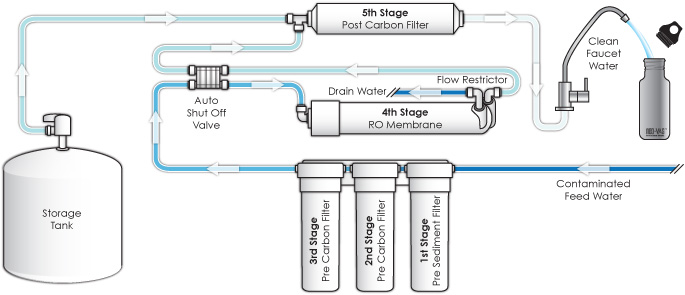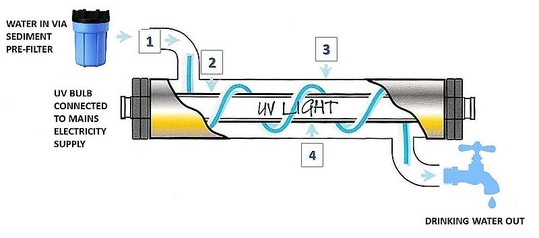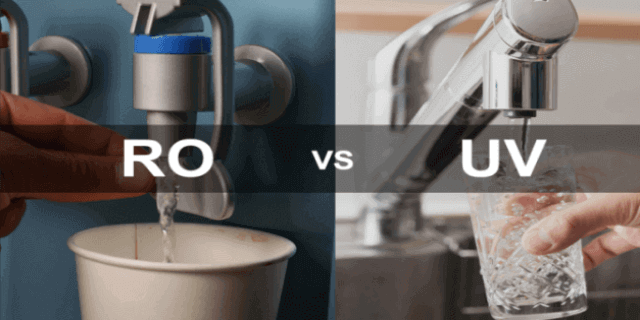RO or UV water purifiers are the most common water purifiers available in the market but before buying any water purifier we must know the difference between these two water purifiers. Most of us thinks that the RO water purifiers is the best choice for your home, this can be true in technological terms but it does not means that every home should have RO water purifiers only.
The selection of a water purifier completely depends upon the quality of the water supplied to your home. A RO water purifier provides advanced level of filtration than UV, however whether this upgraded filtration is truly vital relies upon the quality of the drinking water provided to your home, and that alone should be the criteria to choose the kind of water purifier to go for.
RO water purifier

As we all know about osmosis process that we learn in our school time. RO (Reverse Osmosis) purifier uses the technology which is opposite to osmosis. It filters out water from the region of higher TDs level to the region lower TDS level through a semipermeable membrane. For doing so a high pressure is required to force the water to pass through the semipermeable membrane leaving behind the dissolved solids and other impurities. RO water purifier are very effective in converting the hard water into soft water. RO water purifiers also offers pre-filtration.
To know more about RO process read What is RO purification
UV water purifier

UV water purifiers uses UV rays to kill the harmful bacteria, germs and other microbes. A UV lamp is used in this process in which water is made to pass through the UV lamp. The radiation from the UV lamp kills all the harmful microorganism present in the water since the dead bodies of the microorganism still remain in water so further purification is needed to filter out those bodies. The UV water purifiers from Kent also uses UF technology in UV water purifiers for the complete removal of harmful microorganisms. UV water purifiers are very effective in deactivating all the deadly microorganisms but it is not capable for removing the dissolved chemical impurities and heavy metals from the water.
Difference between RO and UV water purifiers
| RO | UV |
| Removes dissolved salts | Cannot remove dissolved salts |
| Improves the taste and colour of water | Does nothing with the taste and colour of the water |
| RO water purifier produces lot of waste water | No water is wasted in UV process |
| More expensive | Less expensive |
| High maintenance cost | UV water purifier is require low maintenance cost |
| Takes more time to purify | Takes less time to purify water |
| Require electricity to operate | Require electricity to operate |
| Removes microorganism from the water | Kills the microorganisms but their bodies still present in the water |
| Require electricity to boost the pressure of the water | Can work with normal tap water pressure |
Also Read: RO Vs UV Vs UF – Difference Between Water Purifier Technologies
It is very obvious that a RO water purifier is truly valuable if the water supply in your home has abnormal amounts of TDS and impurities. Consequently, before picking any water purifier, you should request for a qualified person to check the quality of your water supply.
Pure water is an essential requirement for everybody. In this way, everybody needs best Water purifier. Each purifier has capacity to purify water and accompanies some extraordinary specifications. But that depends upon your needs, what you want from a water purifier. If the supplied water for your home contains high TDS level then you must go for an RO water purifier and if you are fortunate enough to get the water treatment facility and your water and it does not contain high TDS then you can simply install a UV water purifier in your home.
But when you choose RO purifier always select the one which has inbuilt UV and which also has the feature of TDS control. TDS control helps us to retain the minerals which are removed during the RO process and are essential for our body in suitable amount particularly the growing kids. Water purifier is very necessary appliance to install in your kitchen to ensure the access of safe and pure water.

